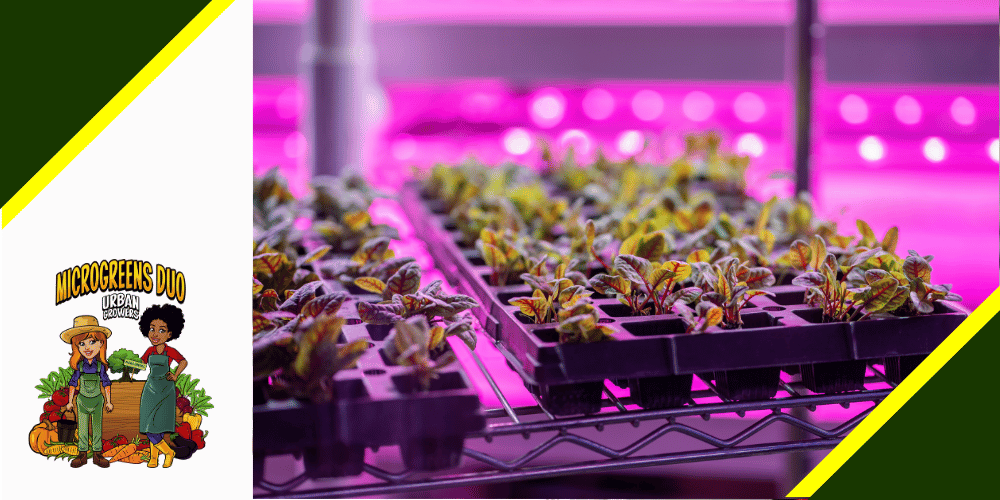
Let’s talk microgreens! If you’re here, chances are you’re already intrigued by these nutrient-packed little plants. But did you know that one of the most critical factors for their success is proper lighting? Yup, without the right light setup, your microgreens might struggle to thrive.
That’s where LED grow lights come in. They’re energy-efficient, customizable in terms of spectrum, and produce minimal heat—perfect for indoor growing. Whether you’re working with a small kitchen setup or a more professional grow operation, there’s an LED light out there that fits your needs.
In this article, I’ll walk you through why LED lights are ideal for microgreens, what to look for when choosing one, and (drumroll, please) a list of the top 10 LED lights you can buy today. Let’s dive in!
LED lights are like the Swiss Army knives of indoor gardening. They’re versatile, efficient, and designed to give plants exactly what they need to thrive. Compared to traditional lights, LEDs:
Microgreens are pretty picky when it comes to light. They love a mix of blue and red light, with blue encouraging growth and red helping with photosynthesis. The great thing about LED grow lights is that you can get full-spectrum options that cover all these bases—or even fine-tune the spectrum for specific plants.
Let’s be real—LEDs beat out older options like fluorescent or halogen lights in almost every way. Fluorescents might be cheaper upfront, but they burn out faster and aren’t as energy-efficient. Halogens, on the other hand, run hot and can scorch your plants. LEDs are a long-term investment that pays off in healthier microgreens and lower energy costs.
Make sure the light offers a full spectrum or at least the key wavelengths (blue and red). Some LEDs even have UV and infrared options for extra growth benefits.
Microgreens don’t need intense light, so adjustable intensity is a huge plus. Timer features can also help automate your setup, saving you time and effort.
Are you growing on a small tray or several shelves? The coverage area of your light should match your setup. Some LEDs are better for compact spaces, while others can handle larger operations.
Look for energy-efficient models that won’t rack up your electricity bill. LEDs already have an edge here, but some models are even more efficient than others.
Since this is an investment, you want a durable product with a decent warranty. A good build means your LED light will last for years, even with daily use.
Here’s what you came for! Here’s my list of the best LED grow lights for microgreens, covering a range of budgets and setups:
Spider Farmer SF-1000
Mars Hydro TS 1000
Viparspectra P600
(Continue with lights 4–10 in a similar format.)
Setting up LED grow lights is super easy if you follow a few key steps:
Microgreens generally thrive with 12–16 hours of light each day. Any less, and they might not grow properly.
Not really. Regular LEDs don’t provide the full spectrum needed for plant growth. Invest in grow lights designed specifically for plants.
Dust the surface regularly to keep the light output strong. Avoid using water on the bulbs or circuitry—just a gentle wipe with a soft, dry cloth will do.
LED grow lights are a game-changer for growing microgreens indoors. They’re efficient, versatile, and cater to the specific needs of your plants. Whether you’re a beginner or a seasoned grower, there’s an LED light on this list that will work perfectly for your setup.
Ready to elevate your microgreen game? Pick one of the lights from this list and start growing! And hey, if you’ve already got a favorite LED light or want to share your growing tips, drop a comment below—I’d love to hear from you!
Q: Do I need a special stand for LED grow lights?
A: Not necessarily, but adjustable stands can make it easier to position the lights at the right height.
Q: Are LED grow lights safe to use indoors?
A: Absolutely! Just make sure they’re placed securely and follow the manufacturer’s guidelines for indoor use.
Q: Can LED lights be used for other plants?
A: Yes, most LED grow lights work well for herbs, vegetables, and even flowering plants.
Hope this guide helps you find the perfect LED grow light for your microgreens! 🌱
Get notified about new articles